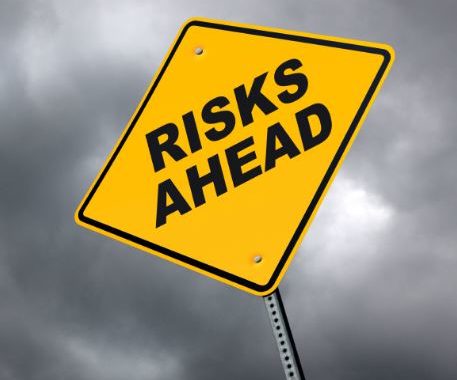One of the terms that you might have heard when you are getting ready to invest is “risk tolerance.” As you might imagine, this term refers to the amount of risk you can handle when you invest. As you evaluate potential investments, it’s a good idea to take some time to review your risk tolerance. For the most part, risk tolerance can be divided into two parts: financial and emotional. Before you make an investing decision, it helps to understand your own risk tolerance; you will make better decisions if you know your own limits.
Financial Risk Tolerance
First, consider your financial risk tolerance. This is represented by how your finances can handle different risks. The old rule is to avoid investing money that you can’t afford to lose. Your first consideration is to figure out, financially, what makes sense for your investment portfolio.
If you are struggling financially, risking a large portion of your paycheck might not be the best plan. You probably need that money for other purposes; you can’t afford to lose it on a risky investment that has the potential to go bad.
In such cases, it might make sense to put a little aside , and take advantage of dollar cost averaging to help you prepare for the future, without sacrificing today.
On the other hand, if you have extra money, you might think it fun to do a little day trading, and take bigger risks. As long as you won’t miss the money if you lose it, it shouldn’t be a problem.
However, be careful when trading on margin. While you could magnify your gains, you will also need to make sure you have a high enough financial risk tolerance to handle magnified losses.
Emotional Risk Tolerance
Determining your financial risk tolerance is fairly straightforward: You just need to run the numbers. Emotional risk tolerance, though, is another matter. Emotional risk tolerance is all about what you can handle emotionally, and has only a little to do with money (although your money situation can contribute to how you emotionally handle risk).
Before you invest, consider your emotional state relative to risk. Some people have a high emotional risk tolerance. They enjoy the thrill of the “game.” Investing in volatile markets, or taking a chance to make it big, holds a great deal of appeal. (Incidentally, you have to be careful if you have a high emotional risk tolerance but a low financial risk tolerance — it can be easy to get carried away and ruin yourself.)
If you have a high emotional risk tolerance, you can mentally handle risks that others have problems with.
A low emotional risk tolerance, though, can mean problems in high risk situations. Constant worry about what will happen next will eventually take its toll on your own health and on your relationships. While you shouldn’t avoid investing altogether, it is a good idea to stick with “safer” investments, such as solid value/dividend stocks, index funds, and stable bonds.
You will need to overcome your risk aversion to some degree, though, since a very high emotional risk tolerance (leading you only to cash products or low yielding bonds) can cripple your ability to build wealth.
Bottom Line
The first rule of just about anything is “know thyself.” Carefully consider the financial and emotional aspects of your risk tolerance so that you can make investing decisions that work better for you.

Pingback: Understanding Margin Investing - Debt Free To Early Retirement